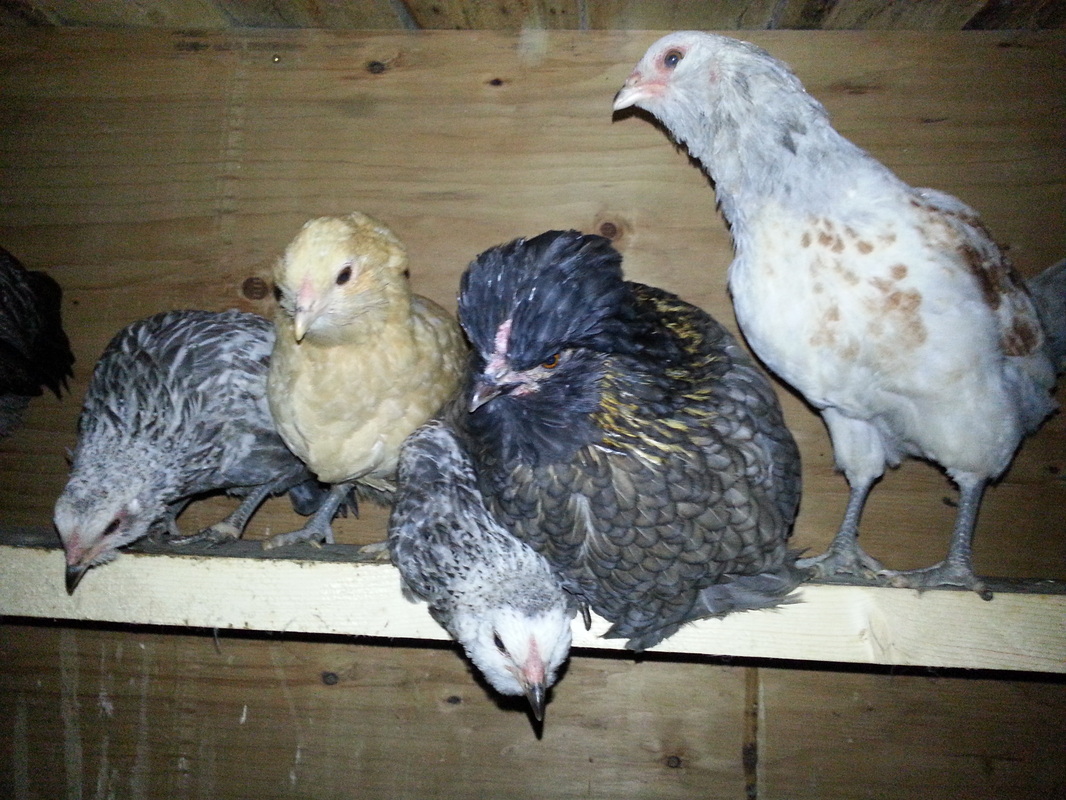The hen perched for self preservation. If the chickens do not roost for the night, they run the risk of their toes and feet freezing. But, because she perched, one of the little ones, who did not understand how to get up on the perch, though there is a ladder, froze her feet solid and she had to be put down. Four of the babies have suvived and thrived. The mother is a bantam cross with quite a few breeds in her background, the dominant head tuft derived from a Silkie. The eggs were fertilized by the Ameraucana rooster and the result is that the babies all have various degrees of the mufffy face. The light buff pullet is a result of the Japanese Bantam influence a generation ago. The Ameraucana rooster was a splash, that is black and white feathers as though some one had spashed him with paint. He is, no was, a big rooster who went into the soup pot and was replaced with new blood from a different line far away.
What I love about the chickens now, is that the way they will turn out is not predicatable. There are enough different colours and featherings in their backgrounds that almost anything is possible. I have kept those that were exceptionaly foragers and the hens that were broody and raised their own clutch of babies, saving me the incubation and brooding troubles. This self perpetuating flock, then serves the farm with meat and eggs and continually renews itself, as in the old days. I should not need to introduce new birds except the roosters, to keep the blood lines fresh. The birds are also excellent flyers and can easily fly up to the top of the elm tree which is at least 20 feet high. That is a desired trait for free range birds who need to escape from predators, however, there are so many livestock guardians that protect the entire farm, that predators have not been seen for several years.
I am looking forward to the bringing back of the light and the eggs that the birds will produce. Thank you little birdies for your work at The Fat Ewe Farm and for your lives. You are beautiful!


 RSS Feed
RSS Feed